Back in February I introduced you to my long-termer for 2019, the Surly Bridge Club: a versatile, multi-terrain touring bike with 27.5in wheels and 2.4in tyres (one of my favourite combinations).
Surly has an extensive touring range. At one end of its spectrum is the Long Haul Trucker, a more traditional rim-brake, drop-bar expedition tourer that will roll quickly on tarmac, and carry everything you need via front and rear racks, as well as the classic spoke holder and pump peg.
At the other end of the spectrum is the flat-bar, braze-ons galore, trek-the-length-of-Mongolia ECR. This monster of a machine is a plus-size tyre touring bike built for dirt roads and is dotted with barnacles ready for racks, mudguards, anything cages and just about everything else you can get away with strapping to it.
- Best cycle computer for 2019 | GPS cycle computers for riding, training, touring and navigation
- Best touring bike: How to choose the right one for you
As for the Bridge Club? It sits comfortably between the two extremes. It’s a no-nonsense approach to bike touring, with braze-ons for the essentials covered (mudguards, front and rear rack, bottle cages and anything cages), without over-complicating things.
It was designed to offer versatility, with a variety of maximum tyre clearances available. For off-road duties, you can opt for 26x3in or 27.5x2.8in tyres. If you’re planning on a long road tour, then it’s also compatible with 700x47c tyres. If you’re looking for a 29er setup, you’re better placed on the Ogre, another string to Surly’s touring bow.
Surly claims it can also run single, double and triple front chainrings. So if you want to be a bang-on-trend bikepacker, you could throw on a pair of 2.8in tyres and run a 1x setup. Old-school tourer? Go with a set of 700c wheels and a triple chainset.
Surly Bridge Club specifications and details
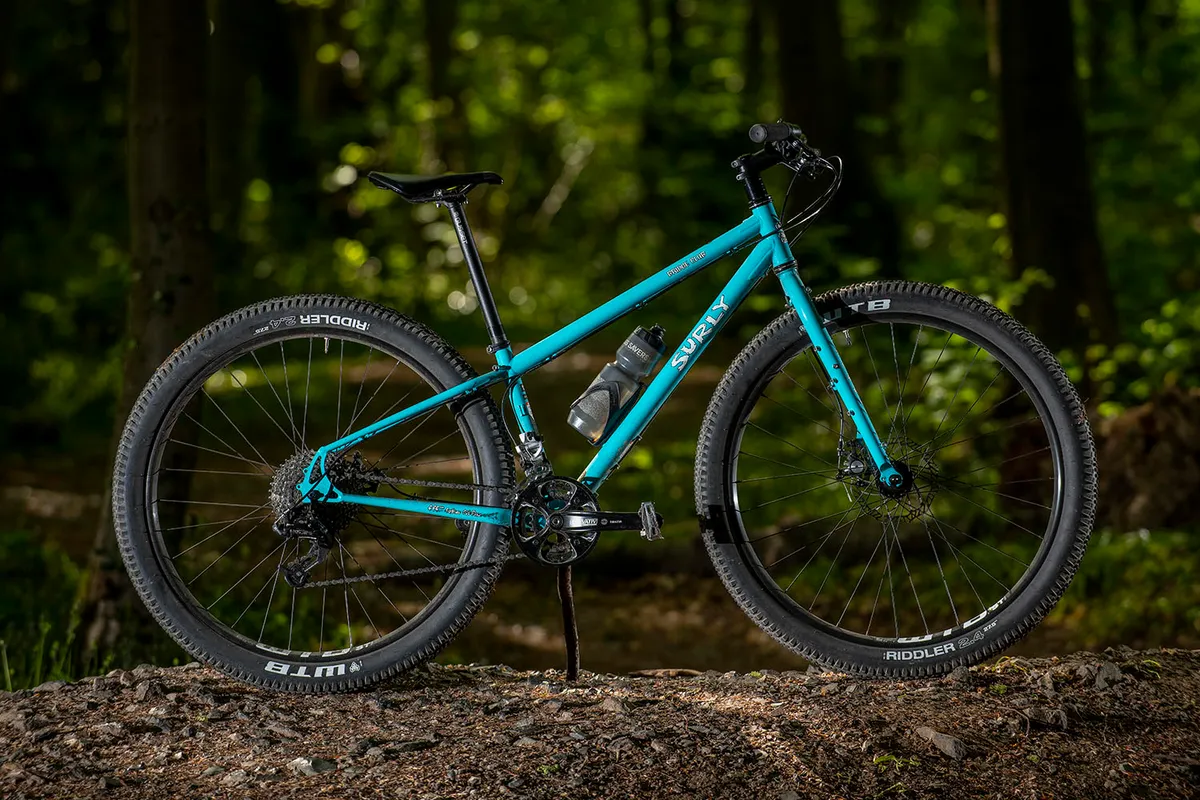
Within the Surly touring line, the Bridge Club sits at the entry level, though this doesn’t mean it comes with an entry-level price tag. At £1,400 / $1,200 it’s a reasonable investment for a bike that’s intended to entice you into bike touring.
However, many other bikes of this nature are generally over the £2,000 mark, and the Bridge Club offers a lot in the way of opening up a whole world to those new to bikepacking.
In order to stay under £1,500 though, some compromises do need to be made, and the suite of components that come with the bike are a bit of a mixed bag.
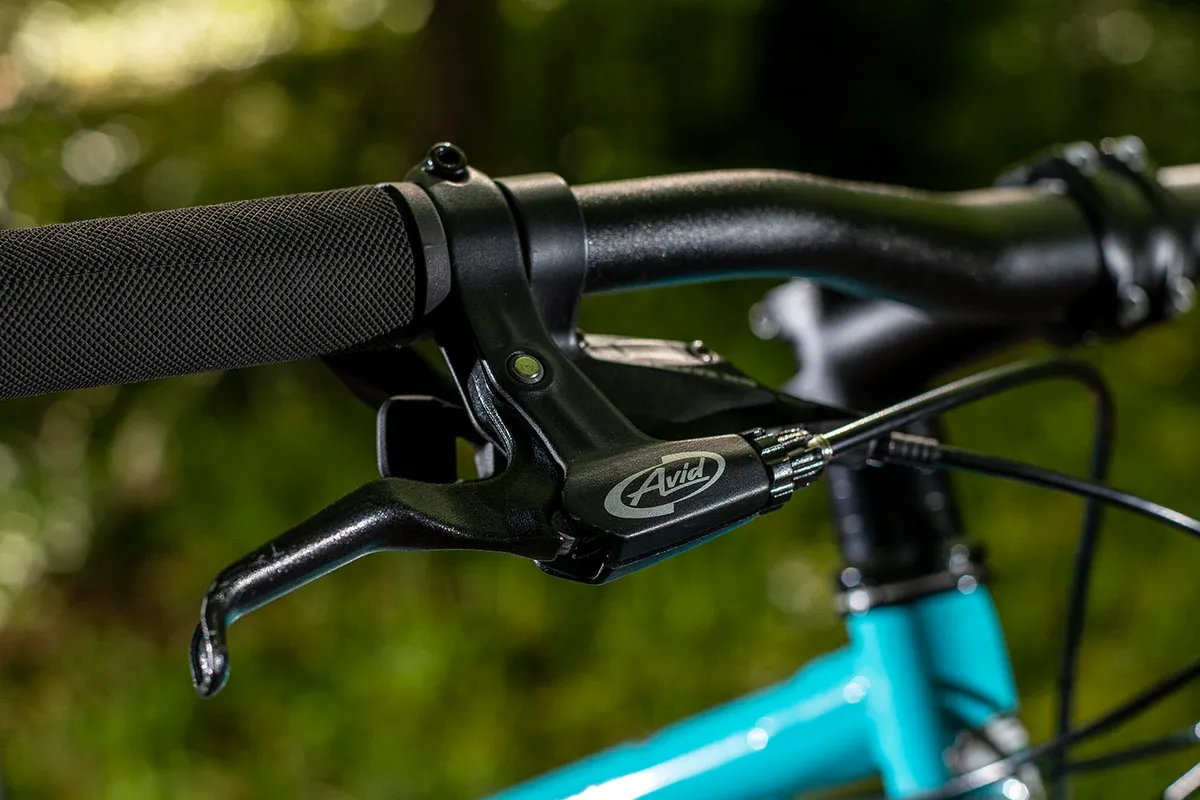
Out of the box, the Bridge Club comes with Promax DSK-300 cable-actuated disc brakes and a mixed drivetrain, comprising a SRAM X5 front derailleur, SRAM GX rear derailleur and Sunrace 11–40t 10spd cassette.
The finishing kit is also a mixture, including Salsa Bend flat bars with a 17-degree sweepback, a WTB Volt saddle and WTB Riddler Comp 2.4in tyres.
The WTB rims are tubeless-ready but the stock tyres aren’t, so you’d need to invest in some new ones if you’re setting it up tubeless. This foregoes the need to go rogue with an improvised tubeless setup for the rims and their tubeless compatibility takes you one step closer to ditching innertubes.
One of the Bridge Club’s most interesting features is that it incorporates Surly’s own Gnot Boost QR rear spacing. It’s designed around 141mm Boost Quick Release hubs, allowing for more chain and tyre clearance, and can be paired with a 135mm hub with the appropriate adaptor. This does mean that it won't take a 142 or 148mm Boost hubs, though.
The brand opted for QR axles because they’re more widely available and therefore suited to the remote areas the bike’s designed to explore.
The Bridge Club also uses a single vertical dropout to keep things as simple as possible.
The frame’s constructed from off-the-shelf 4130 Chromoly with what Surly calls ‘Natch tubing (slang for ‘naturally'). Ride quality is an important factor for any bike, and Surly claims that ‘Natch provides a ride that’s “stiff enough to react well” but also “comfortable enough for an all day, week, month or even longer ride that it won’t beat you up.”
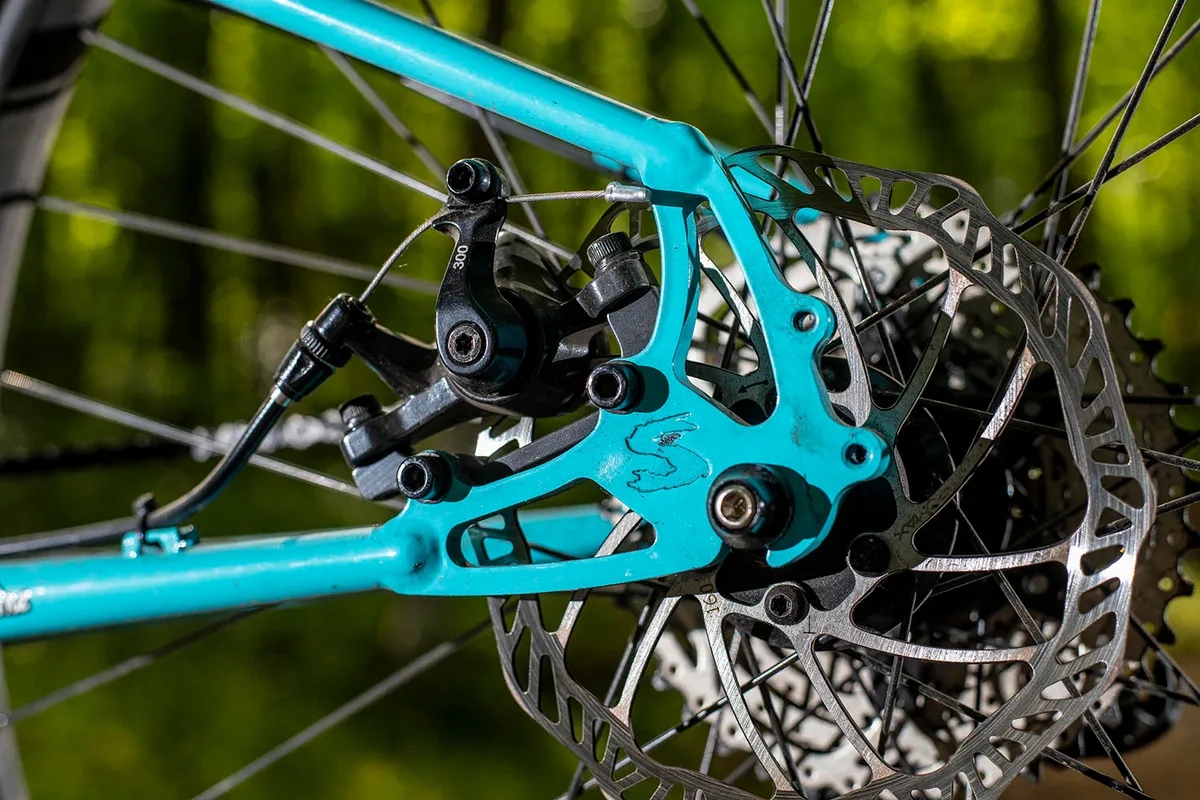
Surly Bridge Club full specification
- Sizes (*tested): XS*, S, M, L, XL
- Weight: 13.5kg / 29.8lb, XS size without pedals
- Frame: 4130 Chromoly, Natch tubing, double-butted main triangle, TIG welded, ED coated
- Fork: 4130 Chromoly, Natch tubing, double-butted tapered fork blades, TIG welded, ED coated
- Shifters: SRAM X5
- Front Derailleur: SRAM X5
- Rear Derailleur: SRAM GX
- Cranks: Truvativ Blaze
- Rims: WTB STPi29 TSC
- Hubs: Formula 32h QR
- Tyres: WTB Riddler Comp 27.5x2.4in
- Brakes: Promax DSK-300, 160 rotors
- Bar: Salsa Bend
- Stem: ProMax 4 bolt, 31.8mm
- Seatpost: Promax 27.2 350L, offset
- Saddle: WTB Volt
Surly Bridge Club geometry
While the Bridge Club claims to do many things, it’s a touring rig at heart. That means relaxed geometry, a reasonably upright riding position, and long, stable wheelbase.
The rest of the range has a 71-degree head angle, and my size XS has a slightly slacker 70-degree angle, in order to eliminate toe-overlap.
- Head angle: 70 degrees
- Seat angle: 73 degrees
- Chainstay: 435mm / 17.13in
- Seat tube: 335.6cm / 13.21in
- Top tube: 534mm / 21.02in
- Head tube: 110mm / 4.33in
- Bottom bracket drop: 60mm / 2.36in
- Wheelbase: 1,032mm / 40.63in
- Stack: 553mm / 21.77in
- Reach: 376cm / 14.8in
Why did I choose this bike?
When it comes to getting my kicks, nothing drives me more than covering long distances and exploring different landscapes. I love knowing that I got myself from one side of the country to another under my own steam.
That kind of riding requires a hardy and comfortable bike that doesn’t get boring, because you’re spending a lot of time together. A bike needs to be versatile enough to let you explore unknown avenues without leaving you feeling restricted.
Since 'steel is real', and variety is the spice of life… hello, Surly Bridge Club!
I’m a sucker for small wheels coupled with chunky tyres. At 156cm, it’s partly down to being a small rider, but also due to the added comfort and grip they can afford you when you’re exploring all manner of terrains.
I have no real preference between road touring and off-road bikepacking — they each have their merits and offer different types of adventure, but in general terms often require a different type of bike.
However, I appreciate simplicity and multi-use wherever possible, so it’s no wonder that I was drawn to this bike, which essentially bridges the gap between paved and off-road exploration.
Living in the UK, I’m expecting it to hit the sweet spot for commuting, pootling, road touring and off-road bikepacking, with a few local trails thrown in for good measure. This takes in a lot of the terrain our small island has to offer, including pothole-riddled roads, canal towpaths, fire roads and bridleways, and some tame singletrack. It’s not the kind of bike you want to be throwing at big rock gardens, though.
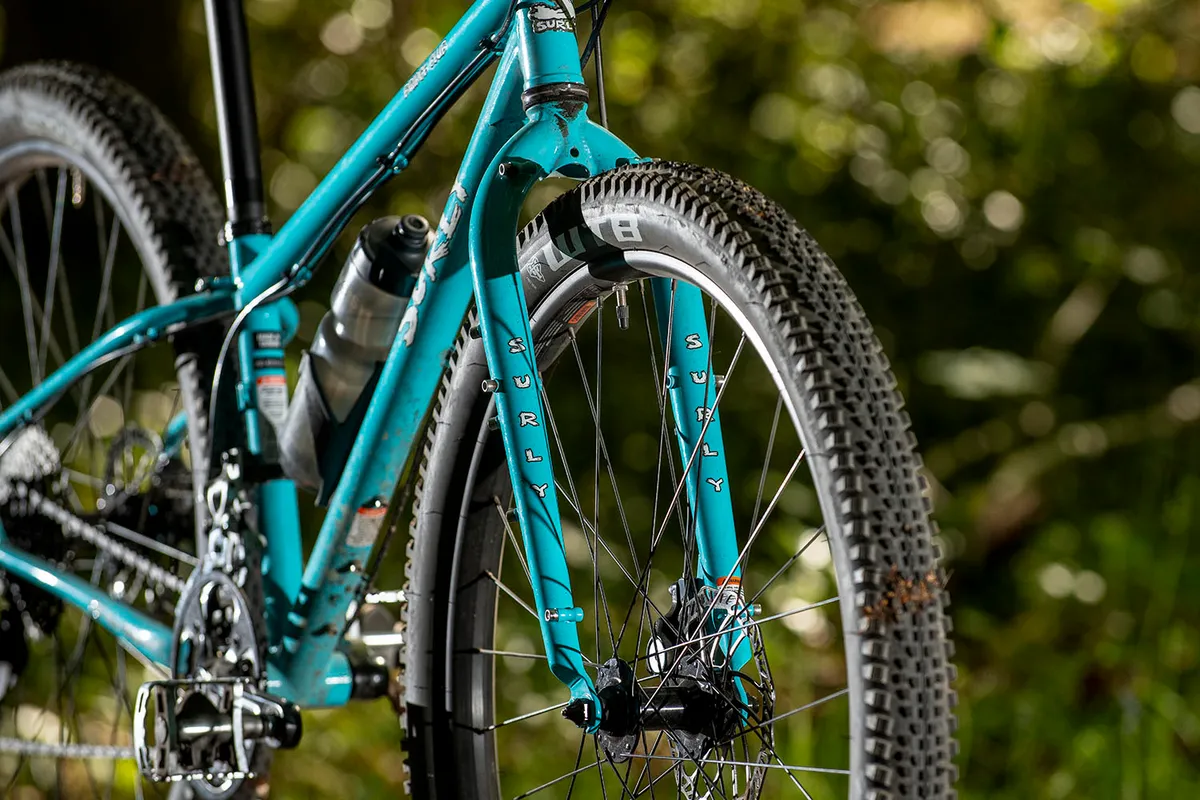
Surly Bridge Club initial setup
For the first couple of months riding the Bridge Club, my main focus was getting acquainted with it as it comes, before making any major changes to the setup.
The only thing I changed immediately was the seatpost, swapping it for a Gusset Lofty XXL. This prompted a lot of comments that the bike was too small for me, so I wanted to address this.
According to Surly’s sizing guide, the XS Bridge Club is claimed to suit riders from 150–165cm tall. At 156cm, this was the obvious choice for me. In terms of standover height and reach, the XS Bridge Club fits me perfectly. The reason for the longer seatpost is down to the extreme slope of the top tube in order to accommodate shorter riders, which results in a much shorter seat tube, and therefore leaving more seatpost exposed.
I spoke to Trevor Clayton, Surly’s ‘pusher man’ (sales dude), during this initial setup to air my concerns and he said: “We make recommendations about our general bike fit based on ‘the average person’ spanning the height ranges we chose based on our experience and survey data collected."
He continued: "This was meant to be a good starting point but obviously everyone is built differently! Two people measuring 5ft8in could ride two different size bikes based solely on reach, for instance.”
It all comes down to individual rider height and proportions. I require a low standover and short reach, and that’s exactly what the XS provides. A larger size would result in the top tube being, ahem, a little too close for comfort. Smaller riders will understand the frustration that can come with making an off-the-shelf bike fit well.
Having said all this, the XS frame does feel as though it’s lost some of the appeal of the larger frame sizes in the range. It’s lacking a bottle cage mount on the seat tube, for example. The frame shape — in order to accommodate a low standover and short reach — isn’t as easy on the eyes as the larger sizes with their much more horizontal top tubes either.
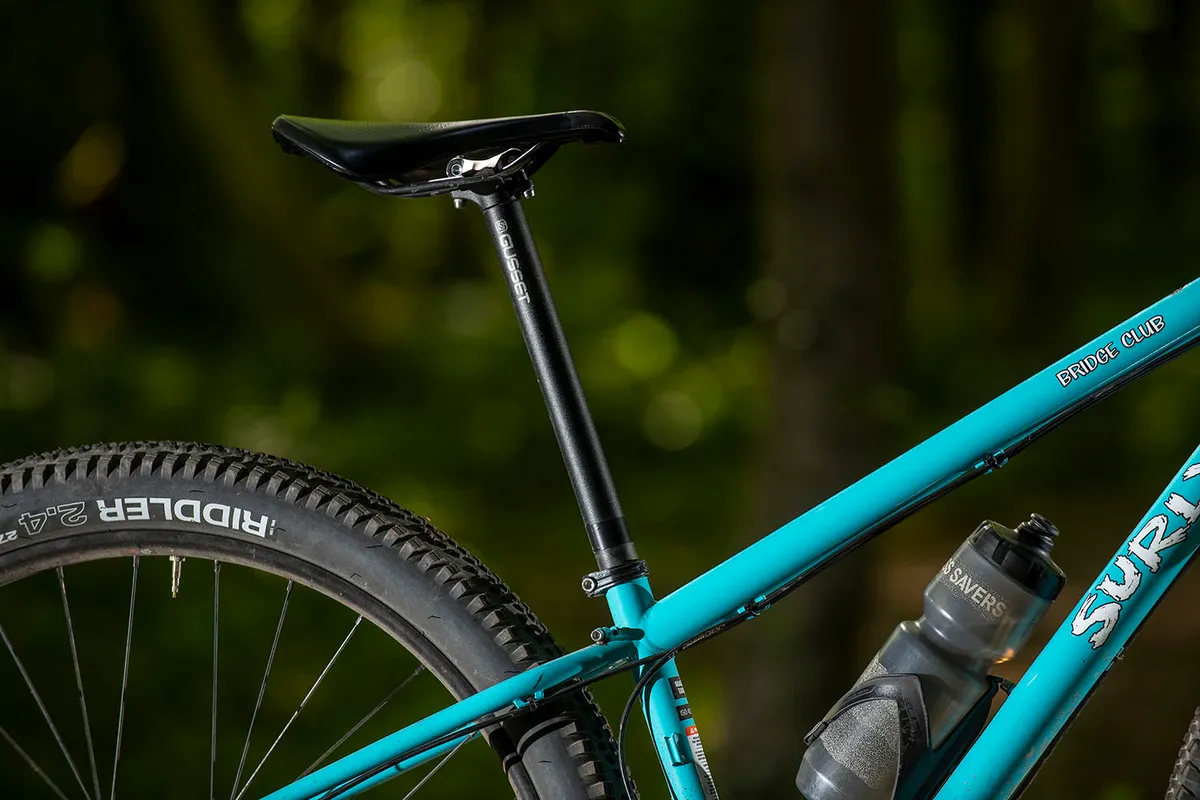
Surly Bridge Club ride impressions so far
So far I’ve mainly used the Bridge Club for commuting, getting about the city and playing around on my local trails.
Not long after it arrived, the UK was very quickly covered with snow, and it turned out to be the perfect bike to get me into the office, despite the weather.
The 2.4-inch tyres provided a great amount of traction to glide over the settled snow, although tackling compacted ice provided a little slippage. Of the lineup of bikes available to me that morning, the Bridge Club was an obvious choice.
As it comes out of the box, the Surly Bridge Club does make for a comfortable commuter. As you’d expect, the supple steel frame combined with the chunky tyres cushions a lot of the blows that are ever present on the UK’s potholed roads.
The WTB Riddler Comp tyres are semi-slick, so they do fine on the tarmac if you’re just bimbling, or riding to your local trails. Their densely-packed centre tread will get you rolling reasonably well if you fill them with air — I’ve been running them at about 50–55psi for the road, and letting them down to 28–30psi for the trails — but there are more efficient tyre options available if you’re planning to mostly ride on the roads.
For commuting and everyday use, a pair of slicks would be much better suited.
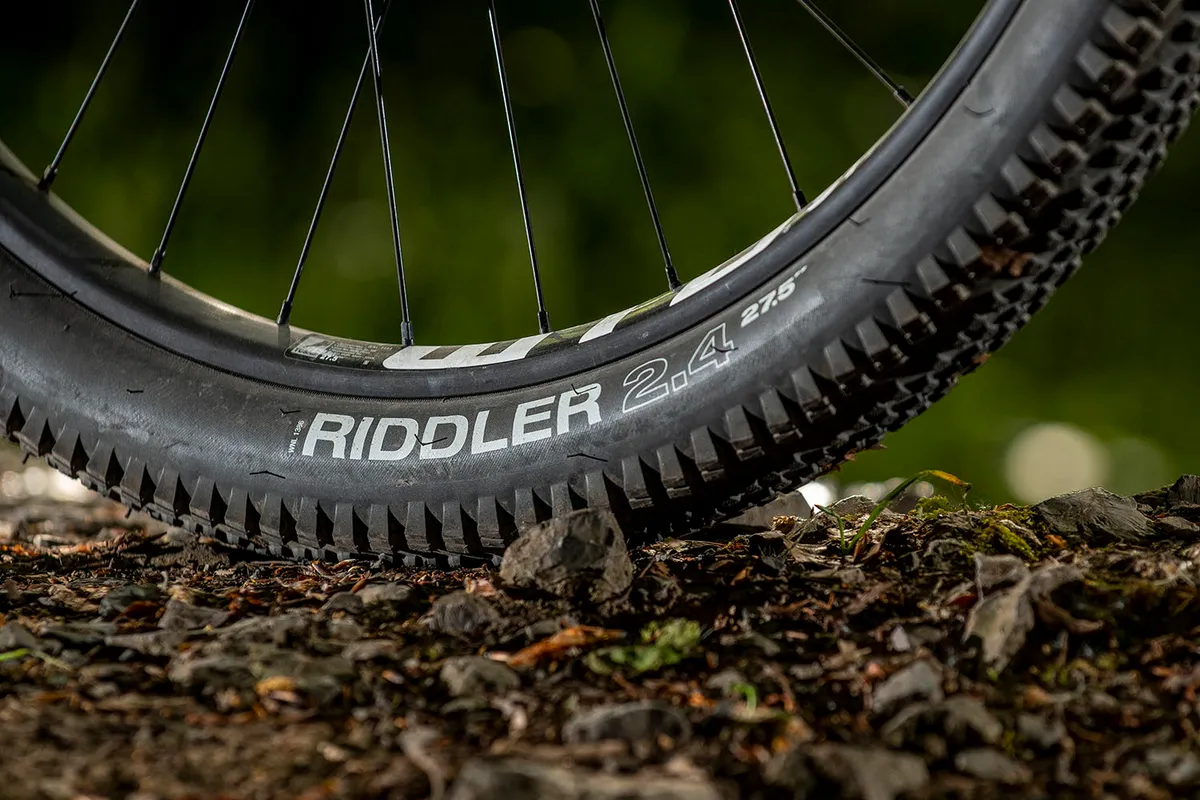
Once you’re on the trails, however, the Riddler Comps do come into their own. While I’ve only ridden them in dry conditions so far, I’ve found them to offer great traction and speed, confident cornering, and haven’t experienced any slipping on climbs.
In terms of gearing, the Bridge Club comes equipped with a 2x10 SRAM X5/GX combo with an 11–40 cassette and 36/24t chainrings. For hilly Bristol (and particularly the steep area I live in), this is actually a really nice setup and there’s a pretty versatile range of gears that should suit most types of riding. While my climb home isn’t completely effortless, it’s definitely the easiest gearing I’ve done it on.
On the downside, I’ve found the Promax brakes quite disappointing so far. They’re horribly vocal to say the least, and compared to other mechanical disc brakes that I rate highly (such as TRP Spyres, Avid BB7s and Shimano BR-CX77s), they feel quite spongey and lacklustre in the stopping power department.
I live on a very steep hill, and the screeching that greets me during my daily morning plummet is rather off-putting, and I'm certain my neighbours hate me for it.
As far as mechanical disc brakes go though, they’re relatively cheap, which helps to keep the cost of the bike down.
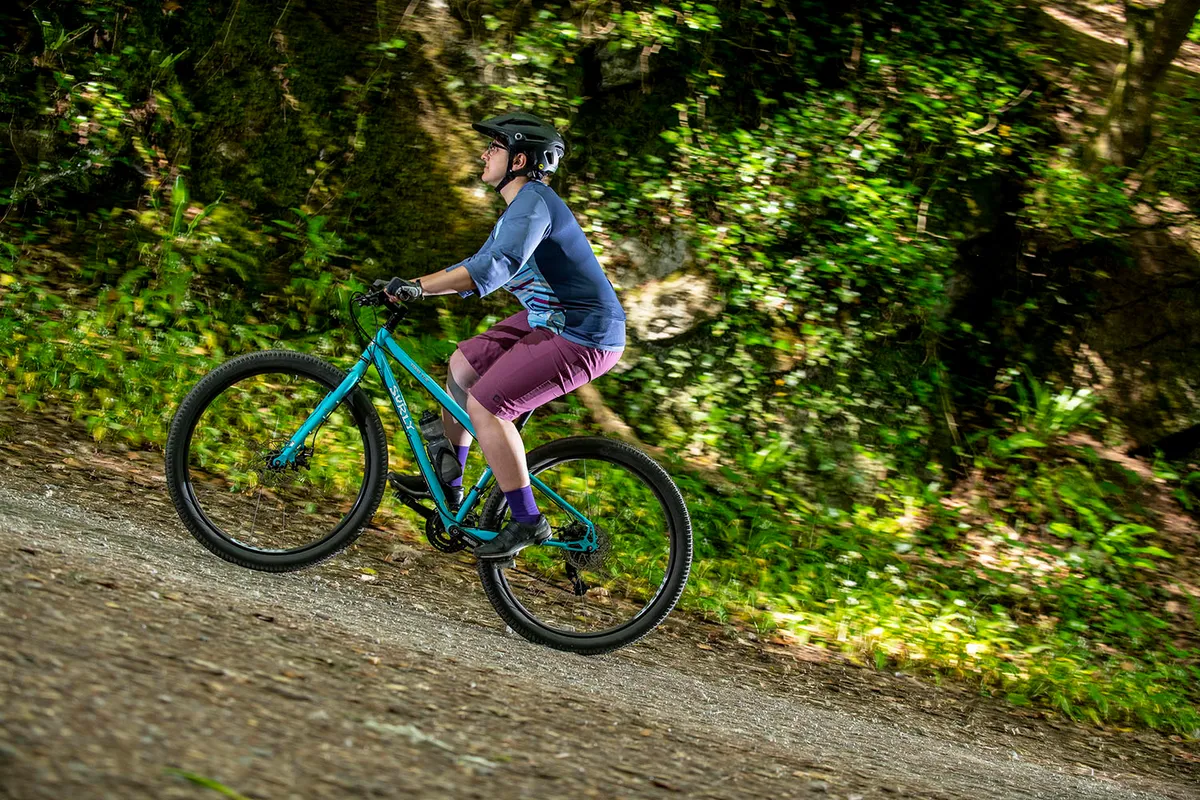
While the Bridge Club is definitely designed to be ridden over long distances and multiple terrains, when it’s not loaded up with racks and luggage, it performs pretty well as a standard rigid mountain bike on the trails.
Obviously, the rigid fork is less forgiving than one with suspension, but the Bridge Club handles well at speed and feels really responsive when pumping through fast and flowy segments.
The head angle is reasonably steep, but makes for faster handling and nippy cornering. If you hit rougher ground or blast through some rock gardens it will definitely feel much less stable as a result, but that’s not really what this bike is for.
The 2.4in tyres offer a fair amount of cushioning as well, so while I wouldn’t necessarily tackle the most gnarly red or black trails with it, it can certainly be a lot of fun on blue trails, and maybe some tamer reds.
It’s easy to get caught up in the advanced suspension systems out there and forget how fun and responsive a rigid mountain bike can be, and while I’m just playing about on the Bridge Club, I’m having a great time with it.
In fact, I may have had a bit too much fun. The phrase ‘confidence-inspiring’ is banded about a lot these days, but that really is the phrase I’d use to describe the Bridge Club when it’s put to work as a rigid mountain bike on the trails. It felt so good that I got cocky, I over-pushed my personal limits, and I crashed.
Thankfully neither of us were too injured, and we were back on the trails the following week.
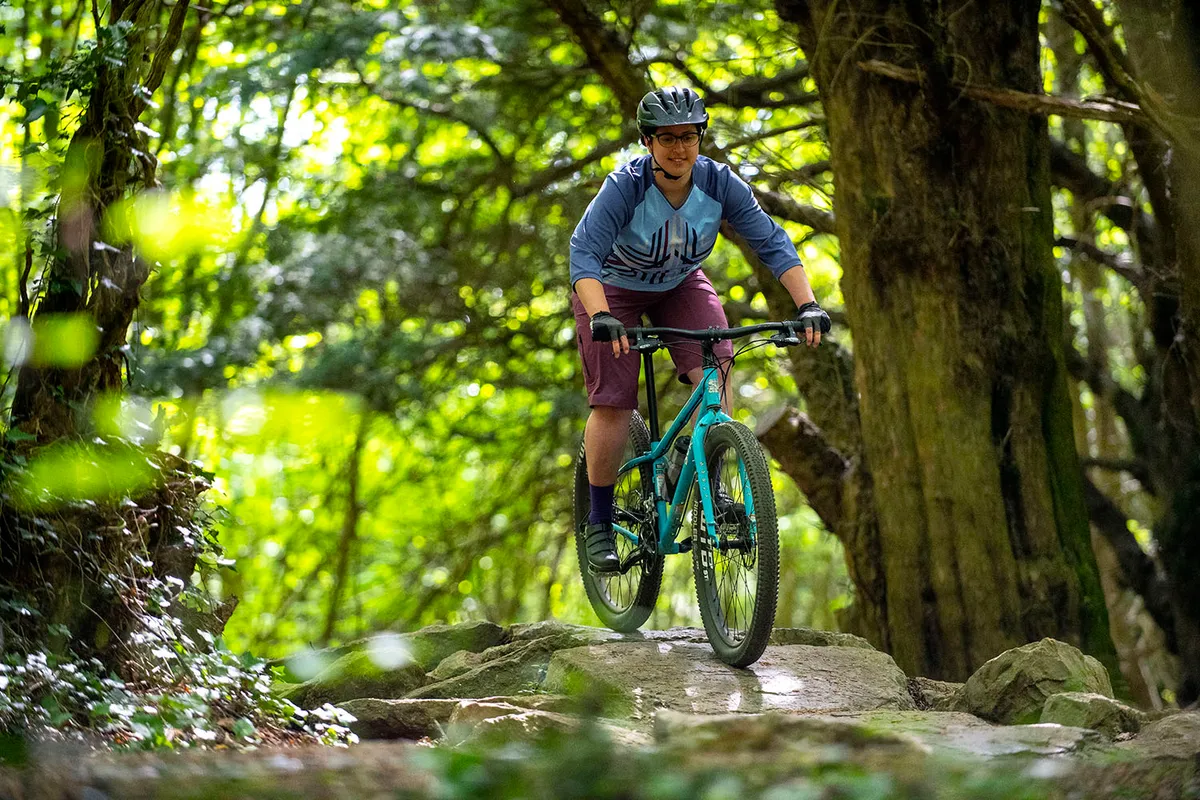
Surly Bridge Club upgrades
So, back when I introduced the Bridge Club to our audience, I also asked for some suggestions on how to kit it out. You didn’t disappoint! There were a lot of great suggestions, some of which I’ve taken on board already.
If you’re an avid reader of 11spd you may have already spotted some of the goodies I called in, including a Surly 8-pack rack, some Schwalbe Super Moto-X tyres (27.5x2.4in), some SKS Bluemels 75 U mudguards, and a set of Restrap bikepacking bags. These include the small frame bag, small rando bag and small saddle pack. I’ll let you know how I get on with these next time.
I’ve now swapped out the WTB Volt saddle for my trusty Specialized Power saddle, and over the next couple of months I’ll be focusing on the Bridge Club’s on-road capabilities. This includes some longer rides and some overnight bivvy trips to see how much these bags can handle on an XS frame.
Stay tuned.
